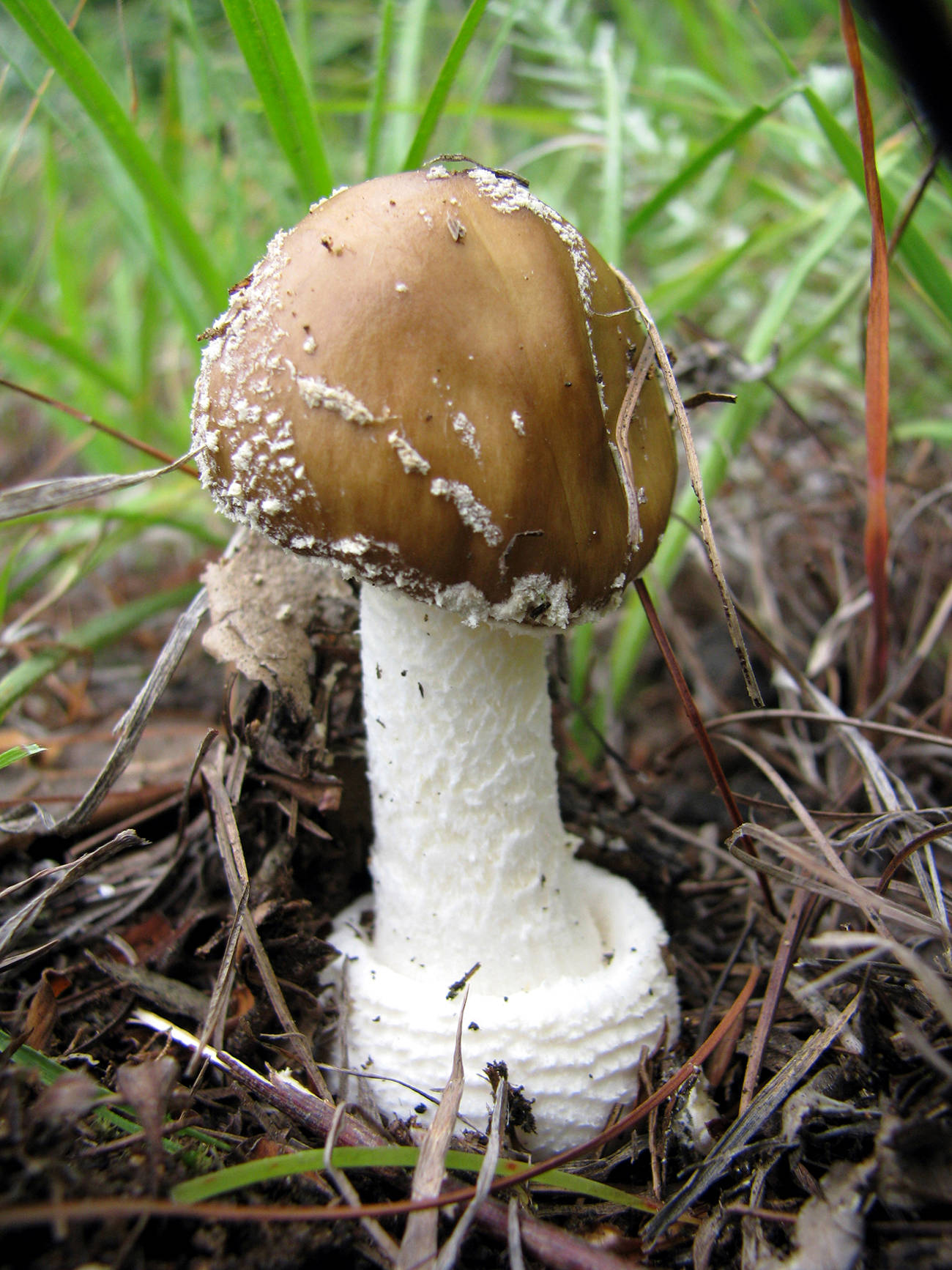
Local name: No local name known
Edibility: Poisonous
Habitat: Terrestrial and solitary or in a group of few.
Description: Cap: Up to 10 cm wide, convex to plano-convex, deep brown to hazel-brown to pale ochraceous brown, warts present, pure white to sordid cream, finely verruculose, floccose and removable. Viscid when wet, with a striate margin. Hymenophore: Free gills, close to crowded, white becoming greyish. Stem: 5-15 cm long and 0.5-2 cm wide, sub-cylindrical, white, becoming slightly light brown in age, stuffed then hollow, minutely floccose becoming smooth above the ring, and with small appressed squamules or cream floccose material below. Ring: Small, thin and white and sometimes movable. Volva: White becoming grey with age, forming one or two narrow hoop-like rings above the bulbous base. Flesh: White, unchanging when is injured. Spore Print: White.
Comments: Very toxic, symptoms include psychomotor excitation, convulsions, delirium, dizziness, hallucinations and vomiting, due to their high content of toxins similar to Amanita muscaria which are concentrated in the cuticle of the cap. It is more toxic than A. muscaria, the features of the stem base and volva of A. pantherina are clearly differentiated from other species of Amanita.


